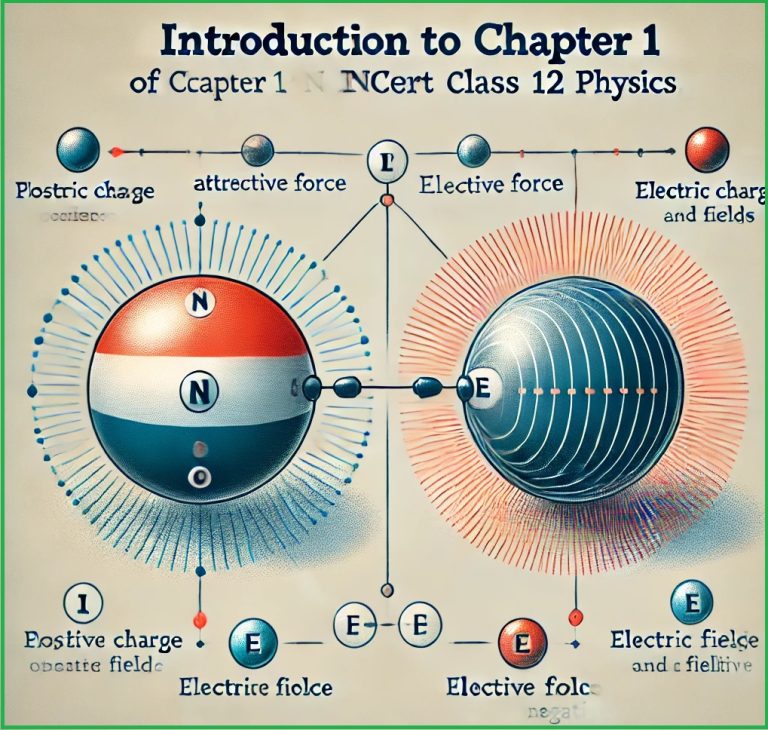Occurrence of Metals: A Detailed Explanation
Metals are one of the most abundant classes of elements in the Earth’s crust and are vital for a wide range of biological, industrial, and technological processes. The occurrence of metals is a critical subject in the study of chemistry, geology, and materials science. This comprehensive discussion will explore the sources, extraction, and distribution of metals, the methods employed for their mining, and the various applications that rely on these vital resources.
1. Introduction to Metals
Metals are elements that typically have properties such as high electrical and thermal conductivity, malleability, ductility, and a shiny appearance. They are found in various forms within the Earth’s crust, either as native metals or more commonly, as part of metal ores. The classification of metals includes both ferrous and non-ferrous metals, with ferrous metals containing iron and non-ferrous metals being all others, such as aluminum, copper, gold, and silver.
Metals have been used by humans for thousands of years, from the Stone Age through to the present-day high-tech applications. Understanding where and how metals occur in nature is vital for efficient extraction and utilization in various industries.
2. Sources and Occurrence of Metals
Metals primarily occur in nature in two forms: as native metals and as part of mineral ores. Native metals occur in their elemental form, while mineral ores contain metals combined with other elements, usually oxygen, sulfur, or carbon. The occurrence of metals depends on the geological processes that have shaped the Earth’s crust over billions of years.
2.1 Native Metals
Some metals occur naturally in their pure, uncombined form. These are called native metals. These metals are relatively rare and are usually less reactive. Examples include:
- Gold (Au): Gold is one of the most famous native metals and is typically found in the form of nuggets or dust in riverbeds or in rock veins. It is highly resistant to corrosion and oxidation, which is why it can remain in its native state for long periods.
- Copper (Cu): Native copper is found in some regions and is commonly associated with volcanic rocks. Unlike gold, copper can oxidize over time to form greenish copper carbonate (patina).
- Silver (Ag): Silver, like gold, can be found in its pure form in nature. It often occurs in deposits with other metals, such as copper and gold.
While these metals are valuable due to their rarity and ease of extraction, they make up only a small fraction of the metals found on Earth.
2.2 Mineral Ores
Most metals are found in the form of ores, which are naturally occurring rocks or minerals from which metals can be extracted. These ores are made up of a metal combined with other elements, such as oxygen (oxide ores), sulfur (sulfide ores), or carbon (carbonate ores). Some common examples include:
- Iron (Fe): Iron is primarily found in nature in the form of iron ore, such as hematite (Fe₂O₃) and magnetite (Fe₃O₄), both of which are oxide ores. Iron is extracted from these ores by reduction, typically in blast furnaces.
- Aluminum (Al): Aluminum is extracted from bauxite, a mixture of aluminum oxides such as gibbsite (Al(OH)₃), boehmite (AlO(OH)), and diaspore (AlO(OH)). Bauxite is the primary source of aluminum and is widely distributed around the world.
- Copper (Cu): Copper occurs as chalcopyrite (CuFeS₂) and bornite (Cu₅FeS₄), both of which are sulfide ores. These ores are subjected to smelting to extract copper metal.
- Lead (Pb): Lead is most commonly found as galena (PbS), a sulfide ore. Galena is the primary ore from which lead is extracted.
- Zinc (Zn): Zinc is found in ores such as sphalerite (ZnS), calamine (ZnCO₃), and zincite (ZnO). Sphalerite is the most important zinc ore.
- Nickel (Ni): Nickel occurs as pentlandite ((Fe,Ni)₆(S,Fe)₈) and nickel laterites, both of which require extraction methods such as smelting and hydrometallurgical processes.
- Tin (Sn): Tin is primarily obtained from cassiterite (SnO₂), an oxide ore, which is processed by reducing the oxide to obtain tin metal.
2.3 Distribution of Metals in the Earth’s Crust
The Earth’s crust is composed mostly of oxygen, silicon, aluminum, iron, calcium, sodium, potassium, and magnesium. Metals are distributed throughout the Earth’s crust in varying concentrations. Some metals are abundant, while others are considered rare or precious. The relative abundance of metals in the Earth’s crust is as follows:
- Iron (Fe) is the most abundant metal in the Earth’s crust, making up approximately 5% by weight.
- Aluminum (Al) is the second most abundant metal, comprising about 8% of the Earth’s crust.
- Calcium (Ca) and sodium (Na) also occur in substantial quantities.
- Precious metals like gold (Au) and platinum (Pt) are much rarer, occurring in concentrations of parts per billion.
Metals such as iron, aluminum, copper, and zinc are extracted more easily due to their relatively high concentrations in ores. Rare metals like gold and platinum require specialized methods of extraction, often from ore bodies with low concentrations of the metal.
3. Extraction of Metals from Ores
The extraction of metals from their ores is one of the most critical industrial processes, and the method employed depends on the nature of the ore and the metal being extracted. Broadly, metal extraction processes can be classified into the following categories:
3.1 Pyrometallurgy
This method involves the use of high temperatures to extract metals from their ores, typically through smelting. Pyrometallurgy is used for extracting metals like iron, copper, and zinc.
- Iron extraction: The extraction of iron from its ores, such as hematite and magnetite, is done in a blast furnace, where iron ore is reduced by carbon in the form of coke at high temperatures.
- Copper extraction: Copper ores like chalcopyrite undergo smelting in furnaces to produce copper metal.
3.2 Hydrometallurgy
Hydrometallurgy uses aqueous solutions, such as acids or alkalis, to extract metals from ores. This method is commonly used for extracting metals like gold, silver, and copper from low-grade ores.
- Gold extraction: Gold is often extracted by cyanide leaching, where cyanide solution is used to dissolve gold from its ores, forming a gold-cyanide complex.
- Copper extraction: For low-grade copper ores, heap leaching and solvent extraction are used to extract copper from ores like chalcocite.
3.3 Electrometallurgy
Electrometallurgy involves the use of electrical energy to extract metals. This method is often used for metals like aluminum and copper.
- Aluminum extraction: Aluminum is extracted from bauxite using the Bayer process, where aluminum oxide is separated from impurities, followed by electrolysis of aluminum oxide to produce aluminum metal.
- Electrorefining: In copper extraction, electrorefining is used to purify impure copper obtained from smelting.
4. Economic and Environmental Considerations
The extraction of metals is not without challenges, both from an economic and environmental standpoint. The cost of extraction depends on the grade of the ore, the energy required, and the efficiency of the extraction process.
- Ore grade: The concentration of metal in an ore significantly impacts the cost of extraction. High-grade ores are easier and cheaper to process, while low-grade ores require more complex and energy-intensive methods.
- Energy consumption: Metal extraction, especially pyrometallurgy, is energy-intensive. The production of metals like aluminum and steel requires large amounts of electricity and fossil fuels, contributing to the carbon footprint.
- Environmental impact: Mining and metal extraction can lead to environmental degradation, including deforestation, soil erosion, and contamination of water resources. The disposal of toxic waste, such as tailings from mining operations, can have long-lasting environmental consequences. Efforts are being made to develop more sustainable extraction methods and reduce the environmental impact.
5. Applications of Metals
Metals are used in a vast array of applications across different industries:
- Construction: Metals like steel, aluminum, and copper are essential in construction for making buildings, bridges, electrical wiring, and more.
- Transportation: Iron, aluminum, steel, and nickel are used in making vehicles, airplanes, trains, and ships.
- Electronics: Copper, gold, silver, and rare earth metals are critical for manufacturing electronic components, such as circuit boards and semiconductors.
- Energy: Metals like copper and aluminum are used in power generation and transmission lines, while metals like uranium are used as nuclear fuel.
- Jewelry and Coins: Precious metals like gold, silver, and platinum are used for making jewelry, coins, and decorative items.
10 common Questions related to the occurrence of metals, along with detailed answers for each:
1. What are metals and how do they occur in nature?
Answer:
Metals are chemical elements that typically exhibit properties such as high electrical conductivity, malleability, and luster. They occur in nature either in their pure, uncombined form as native metals (such as gold and copper) or more commonly, as part of mineral ores. These ores are combinations of metals with other elements, usually oxygen, sulfur, or carbon. Metals like iron, aluminum, copper, and zinc are extracted from these ores through various processes, such as smelting or electrolysis.
2. What are native metals, and can you give examples?
Answer:
Native metals are metals found in their pure, uncombined form in nature. These metals are typically less reactive and can exist without being chemically combined with other elements. Examples of native metals include:
- Gold (Au): Found in riverbeds or as veins in rocks, gold is highly resistant to corrosion.
- Copper (Cu): Copper can occur as native copper in volcanic rocks and riverbeds.
- Silver (Ag): Like gold, silver can be found in its pure form in nature, often associated with other metals like copper or lead.
These native metals are rare compared to ores, which contain metals combined with other elements.
3. What are ores, and how are they related to metal extraction?
Answer:
Ores are naturally occurring minerals that contain a high concentration of a metal that can be extracted for industrial use. Ores are composed of metal compounds, often oxides, sulfides, or carbonates. For example:
- Iron ore (such as hematite and magnetite) contains iron in the form of iron oxide.
- Bauxite is the main ore for aluminum and contains aluminum oxide.
- Galena is the primary ore for lead, containing lead sulfide.
Metals are extracted from these ores using various methods, including pyrometallurgy (using heat) and hydrometallurgy (using chemical solutions), depending on the nature of the metal and the ore.
4. What is the process of extracting metals from ores?
Answer:
The extraction of metals from ores involves several processes, which depend on the type of ore and the metal:
- Pyrometallurgy: This method uses high temperatures to extract metals. For example, in the blast furnace, iron is extracted from iron ore by reducing iron oxide with carbon.
- Hydrometallurgy: This process uses aqueous solutions to dissolve metals. For instance, gold is extracted using cyanide leaching, where cyanide solution dissolves gold from its ores.
- Electrometallurgy: This process uses electrical energy, as seen in the extraction of aluminum through electrolysis of aluminum oxide derived from bauxite.
These methods allow metals to be isolated from their ores in a usable form.
5. Why is iron the most abundant metal in the Earth’s crust?
Answer:
Iron is the most abundant metal in the Earth’s crust due to its formation during the Earth’s early history. It was one of the first elements to form as the planet cooled. Over time, iron became a major component of the Earth’s core and crust. As a result, iron ores such as hematite and magnetite are widespread, making iron readily available for extraction. Iron’s ability to combine with other elements, such as oxygen (forming oxides), further contributes to its abundance.
6. What is the role of bauxite in metal extraction?
Answer:
Bauxite is the primary ore of aluminum and consists mainly of aluminum oxide minerals like gibbsite, boehmite, and diaspore. The extraction of aluminum from bauxite involves the Bayer process, where the bauxite is crushed and mixed with a hot, concentrated solution of sodium hydroxide. This process dissolves the aluminum oxide, which is then separated and refined by electrolysis to produce pure aluminum metal. Bauxite is the world’s major source of aluminum and is abundantly found in tropical and subtropical regions.
7. What is the environmental impact of metal extraction?
Answer:
Metal extraction can have significant environmental impacts, including:
- Habitat destruction: Mining often involves clearing large areas of land, leading to deforestation, soil erosion, and loss of biodiversity.
- Pollution: Mining and metal processing release pollutants, such as heavy metals and toxic chemicals (e.g., cyanide, sulfur dioxide), into the air, water, and soil. Acid mine drainage from sulfur-containing ores can contaminate water sources.
- Energy consumption: Many extraction processes, especially pyrometallurgy, are energy-intensive and contribute to the carbon footprint of metal production.
Efforts are being made to develop more sustainable mining practices, including recycling metals, reducing waste, and using cleaner energy sources in extraction processes.
8. What are the most important methods of metal extraction?
Answer:
The most important methods of metal extraction include:
- Smelting (Pyrometallurgy): High temperatures are used to extract metals, such as the extraction of iron from iron ore in a blast furnace.
- Cyanide Leaching (Hydrometallurgy): This method is commonly used for extracting gold, where cyanide dissolves gold from its ore.
- Electrolysis (Electrometallurgy): An electric current is passed through a solution to extract metals, as seen in the extraction of aluminum from bauxite and copper from its ores.
The method used depends on factors such as the reactivity of the metal, the type of ore, and environmental considerations.
9. What are the challenges associated with metal extraction?
Answer:
Challenges in metal extraction include:
- Ore quality: Low-grade ores require more energy and complex methods for extraction, increasing costs.
- Environmental concerns: Metal extraction processes, such as mining and smelting, contribute to pollution, habitat destruction, and resource depletion.
- Energy demands: Many extraction methods are energy-intensive, requiring large amounts of fossil fuels or electricity, which raises costs and environmental impact.
- Metal scarcity: Some metals, like gold and platinum, are scarce in nature, making their extraction expensive and difficult.
Innovations in sustainable mining techniques and recycling aim to address some of these challenges.
10. How do metals like copper, gold, and iron impact industries?
Answer:
Metals like copper, gold, and iron play crucial roles in various industries:
- Copper: Used in electrical wiring, electronics, and plumbing due to its excellent conductivity and corrosion resistance.
- Gold: Valued for its use in jewelry, currency, and electronics, especially in connectors and circuit boards, due to its resistance to corrosion and high value.
- Iron: Iron is the backbone of the construction and manufacturing industries, primarily in the form of steel, used in buildings, bridges, transportation, and machinery.






